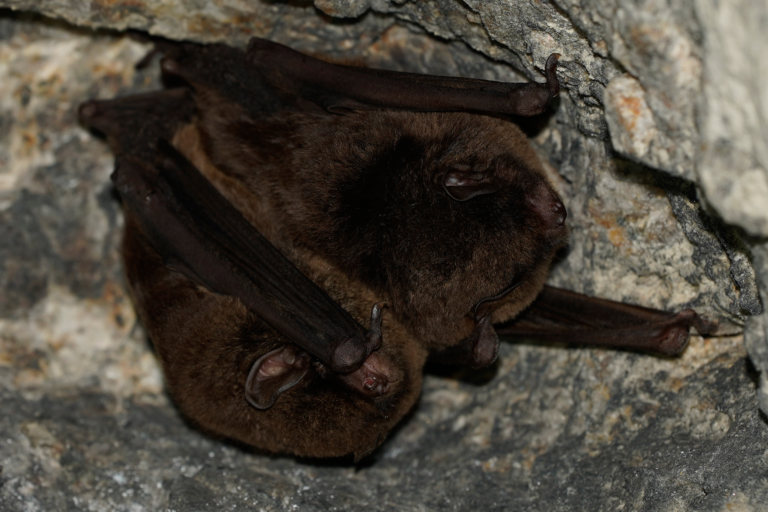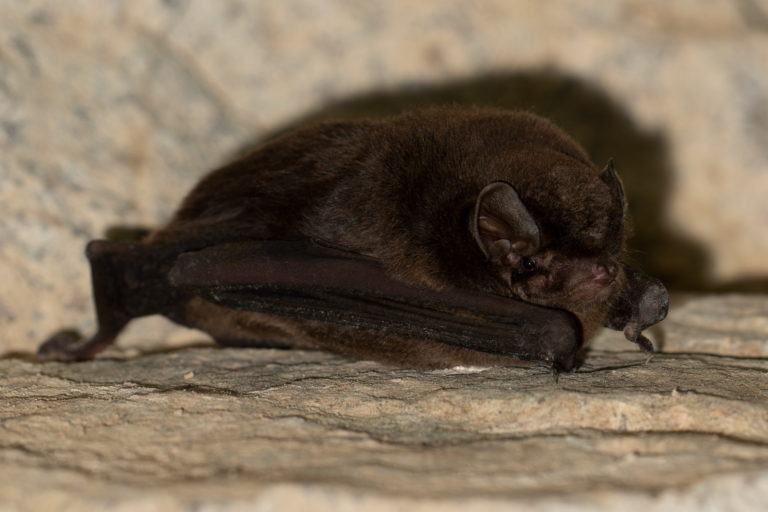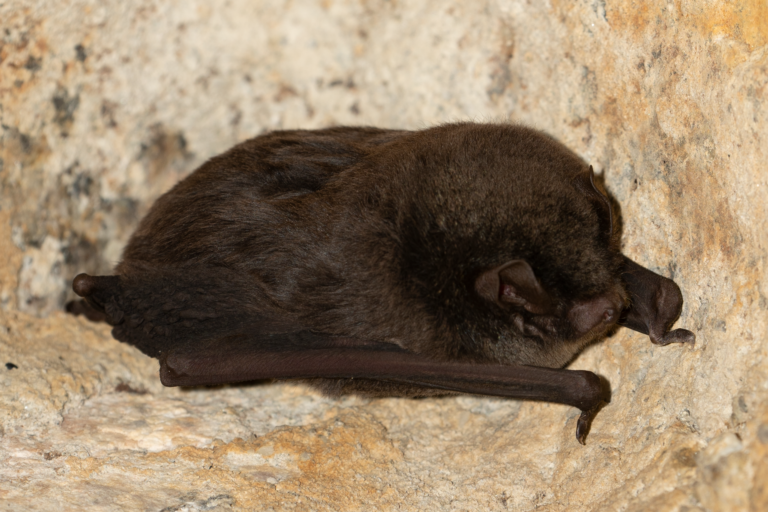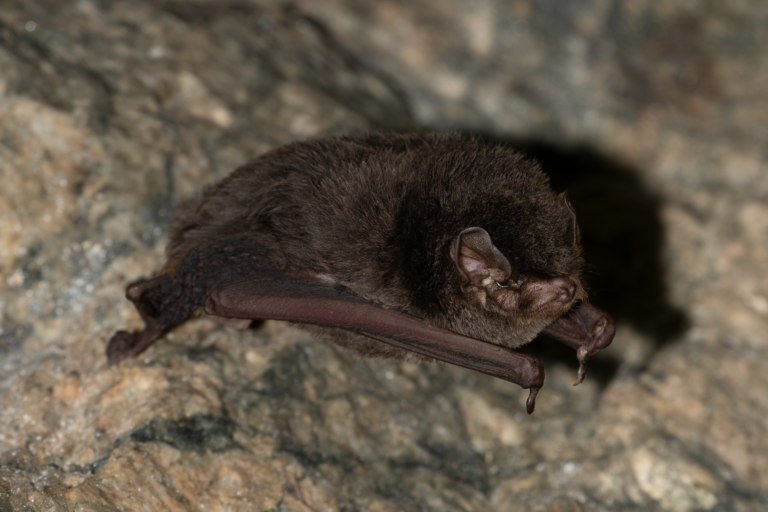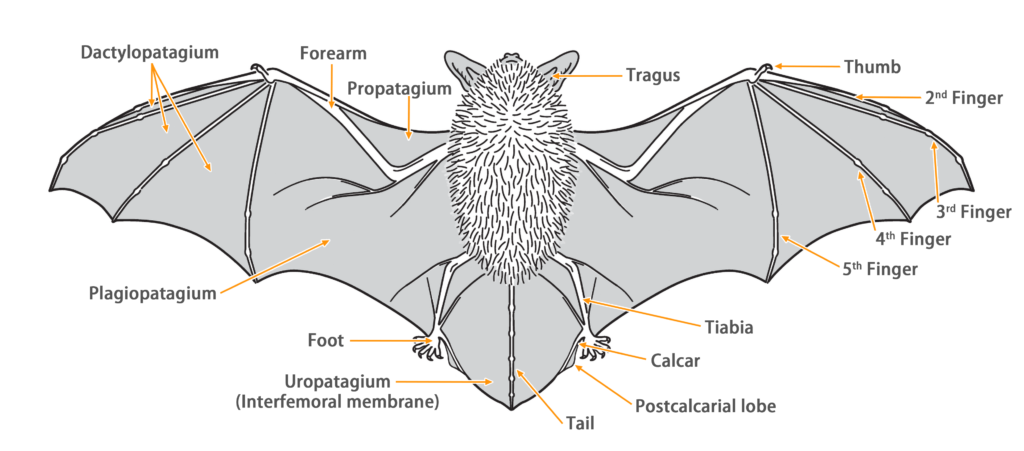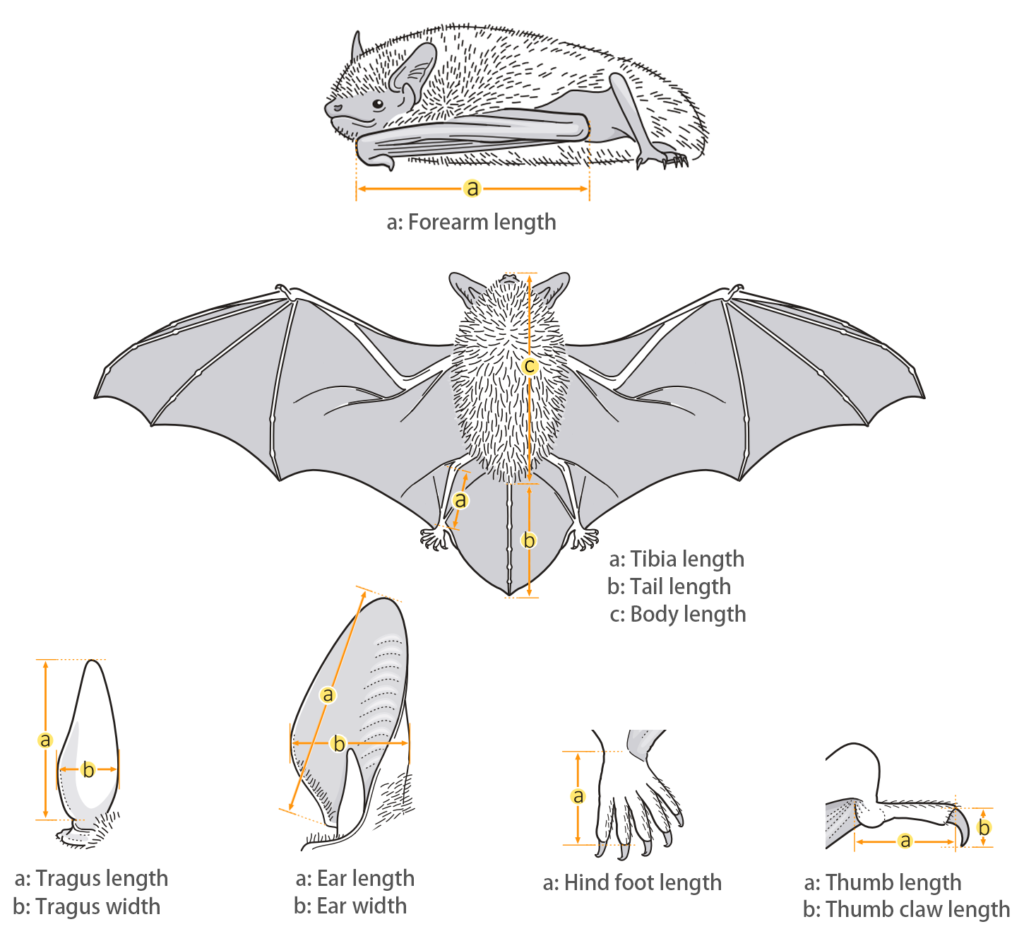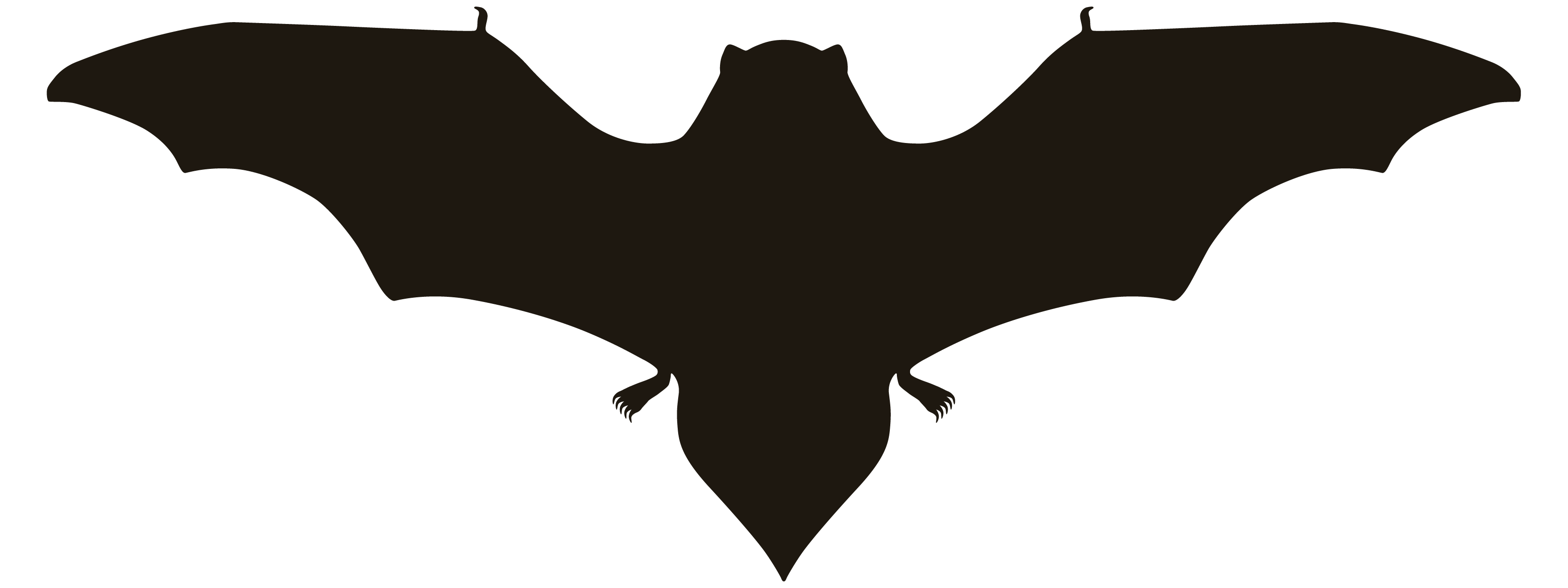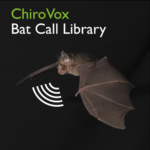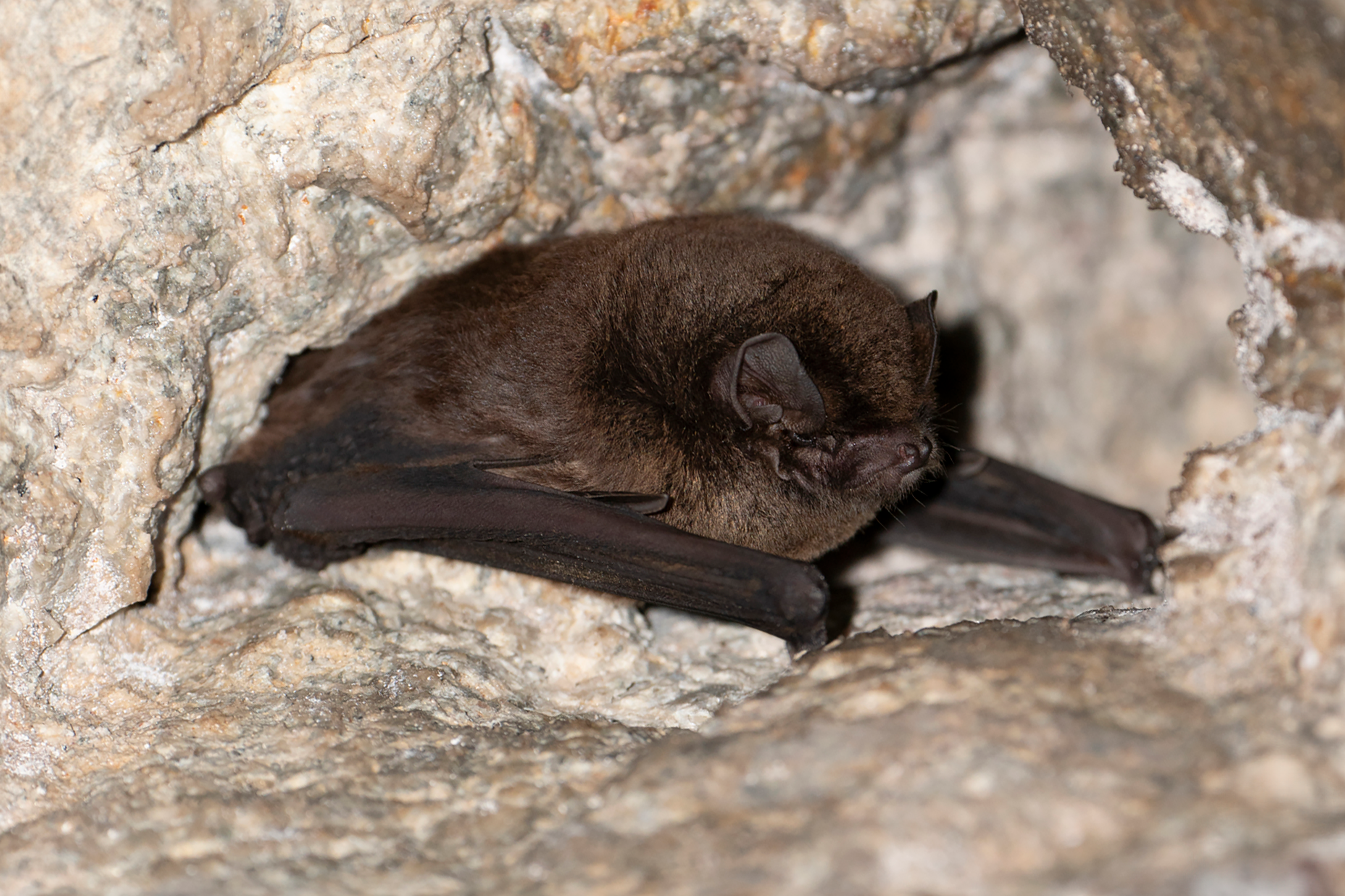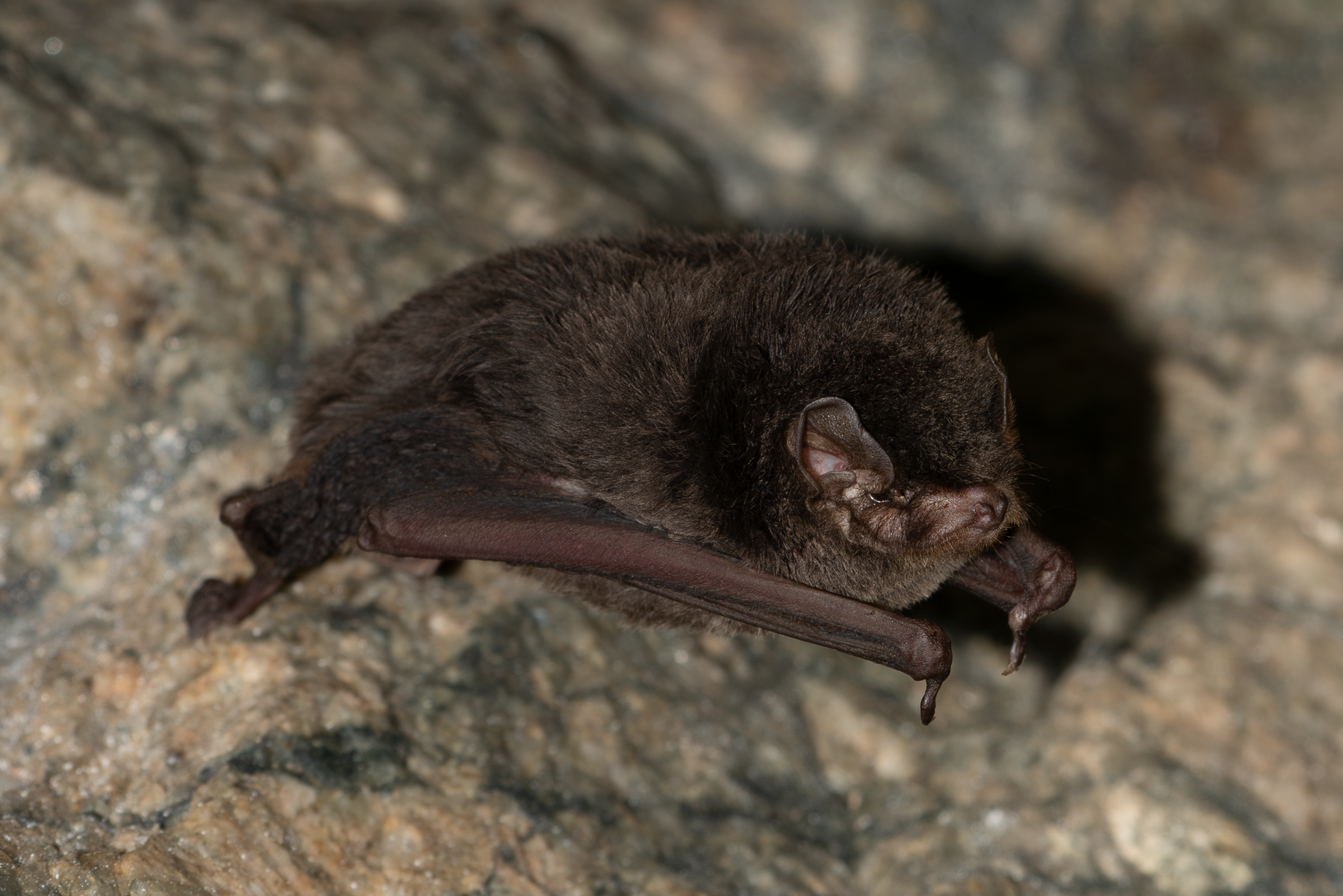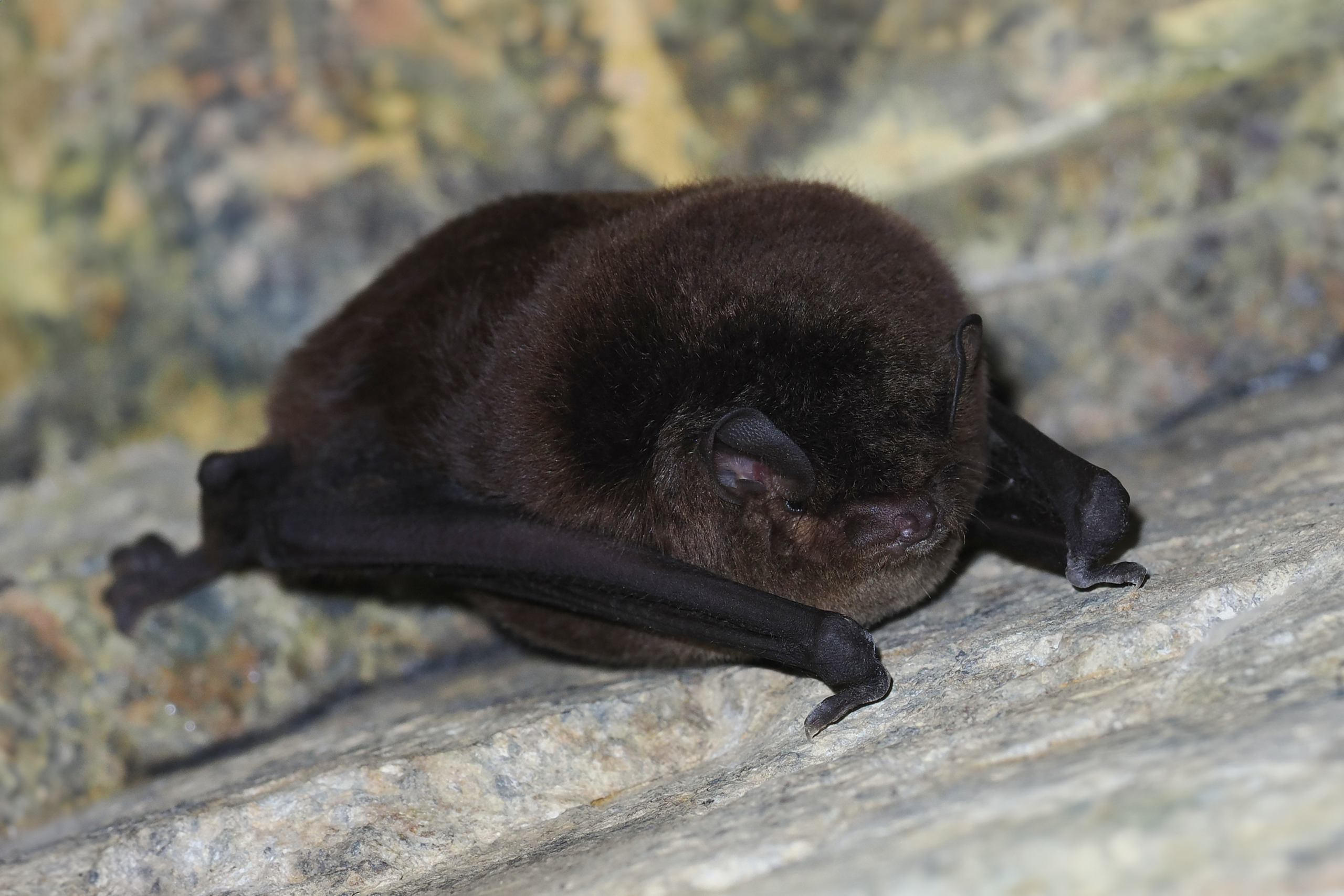- Hong Kong Bat Radar
- Greater Bent-winged Bat (Miniopterus magnater)
Greater Bent-wing Bat
Miniopterus magnater Sanborn, 1931
Taxonomy
| Family: | Miniopteridae |
| Genus: | Miniopterus |
| Scientific name: | Miniopterus magnater Sanborn, 1931 |
| Synonyms: |
M. macrodens Maeda, 1982 M. magnater macrodens Maeda, 1982 M. magnater magnater Sanborn, 1931 M. schreibersii magnater Sanborn, 1931 |
| Common name: | Greater Bent-winged Bat |
| Other name: | Large/Western Bent-winged Bat, Large/Western Long-fingered Bat |
| Remark: | M. magnater was initially considered a subspecies of M. schreibersii but was later elevated to the status of an independent species. Furthermore, there are discernible differences between the populations in Southeast Asia and those in Papua New Guinea, indicating the need for further research into their taxonomic classification. |
| Characteristics | |
| Color: | The body fur is long, silky, dense, and lustrous. The dorsal fur exhibits various shades, typically appearing as uniform dark gray or dark brown (black at the base and deep gray or brown at the tip). Some individuals display fur color variations, with the head and upper body being brown and the lower body being dark gray, or partial fur whitening (such as the neck, back, and buttocks). The ventral fur is relatively lighter in color. Juvenile bats have a relatively darker overall fur color, appearing grayish-black. |
| Ear: | The ear pinna is short and round, with a rounded and non-protruding ear tip that does not extend beyond the pelage of the crown significantly. The tragus is thumb-shaped, with a short and blunt tip that curves forward. The color of the ear pinna and tragus varies, showing substantial individual differences, ranging from uniform deep gray to a gradient of dark gray above and light white below. |
| Head: | The skull is highly elevated, and the snout is wide and short. |
| Limbs: | The wing membrane extends to the ankle. At rest, the wingtips fold outward, extending beyond the wingspan. |
| Tail: | The tail is long, completely enveloped by the interfemoral membrane. The calcar is long and unkeeled. |
| Body measurements | |
| Size: | Medium Bent-winged bat |
| Body: | 58.0 - 75.0 mm |
| Tail: | 52.0 - 64.0 mm |
| Ears: | 11.0 - 17.0 mm |
| Hind foot: | 9.0 - 13.0 mm |
| Forearm: | 48.0 - 54.0 mm |
| Weight: | 11.3 - 21.3 g |
| Wing morphology | |
| Wing span: | - |
| Wing area: | - |
| Wing loading: | - |
| Aspect ratio: | - |
| Tip-shape index: | - |
| Reference: | - |
Ecology
| Habitat: | Roosting primarily in caves such as water tunnel and abandoned mine caves, usually be found in rock crevices, fissures, or drainage holes. They may also inhabit gaps in buildings, rocks, and trees. |
| Habit: | They are known to roost in groups, but solitary individuals are also observed. Colony sizes can exceed a thousand individuals, but the exact size of local colonies is still under research. Local colonies range from a single individual to over 900 individuals (Lin Ma Hang mine cave recorded a breeding colony of over 900 individuals in summer #). When roosting, individuals tightly cluster or overlap with each other and typically aggregate with conspecifics. During the winter, they disperse in a scattered manner within their habitat, either roosting individually or in small groups. |
| Reproduction: | Mating occurs from September to November, with breeding occurring from June to July and lactation period from July to August. Usually, only one offspring is produced. They form large breeding colonies with Myotis chinensis, Myotis pilosus, and Miniopterus pusillus, with Miniopterus spp. typically occupying the central positions within the colony. |
| Hibernation: | Hibernation typically occurs from late December to February, but the exact duration varies depending on weather conditions. |
| Flight: | Due to the lack of specific wing parameters, reference is made to the closely related Miniopterus fuliginosus. The wing loading and aspect ratio are considered moderate to high, suggesting fast flight speed and excellent flight efficiency but with reduced agility. This wing structure is suitable for navigating and foraging in open mines or relatively uncluttered environments. |
| Migration: | With its slender wing shape and relatively high aspect ratio, it possesses excellent flight efficiency and long-distance migration capabilities, although specific migration routes have not been documented in the literature. |
| Foraging: | They typically leave their roosts after sunset and are known to prefer open spaces above the tree canopy for foraging. They engage in medium to high-speed flight and occasionally fly close to the ground, streams, or waterways while foraging. |
| Diet: | As insectivorous bats, they primarily feed on insects by aerial feeding. Due to their fast flight speed and reduced agility compared to bats with lower wing loading, they are unable to employ a sweeping motion to capture a large number of small insects from the orders Diptera and Lepidoptera. Instead, they tend to prefer larger insects from the order Coleoptera and order Lepidoptera, which provide higher energy intake. |
Diet composition of M. magnater in
Hong Kong (Peak) (Ades, 1994) #
Diet composition of M. magnater in
Hong Kong (Lin Ma Hang) (Ades, 1994) #
Distribution
| Local: | The New Territory, Hong Kong Island and Lantau Island |
| Global: | Northeast India (Meghalaya), South China (including Hong Kong and Hainan Island), most of mainland Southeast Asia, Sunda Islands (Sumatra, Borneo, Java, Nusa Penida, and Timor), and Central Moluccas (Seram and Ambon Islands) to New Guinea; it may occur in Bangladesh (Ibáñez & Juste, 2019) |
Local distribution map
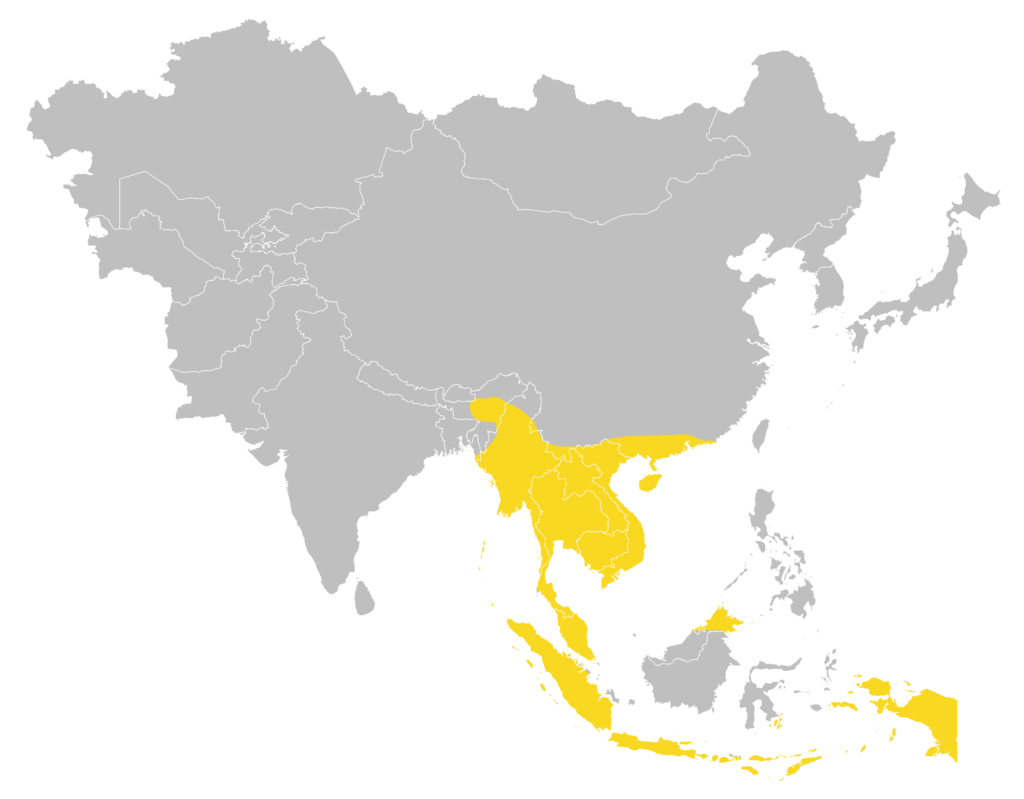
Global distribution map
(Ibáñez & Juste, 2019)
Status and Conservation
| First record: | 1990 |
| Origin: | Native |
| Local status: | Common (Shek & Chan, 2005) # |
| National status: | Near Threatened (Red List of China Vertebrates) |
| Global status: | Least Concern (IUCN Red List) |
| Potential threat: | TBC |
Echolocation
| Parameter | Value |
|---|---|
| Call structure | FM-QCF |
| Duration | 4.35 ± 1.52 ms |
| Inter pulse interval | 65.21 ± 18.93 ms |
| Peak frequency | 47.36 ± 2.48 kHz |
| Start frequency | 85.30 ± 9.89 kHz |
| End frequency | 42.30 ± 17.02 kHz |
|
Region: |
Thailand |
| Method: | Hand release / Flight tent |
| Reference: | Hughes et al., 2011 |
| Parameter | Value |
|---|---|
| Call structure | FM-QCF |
| Duration | 3.49 ± 0.84 ms |
| Bandwidth | - kHz |
| Peak frequency | 49.25 ± 3.10 kHz |
| Start frequency | 78.54 ± 7.31 kHz |
| End frequency | 41.06 ± 2.24 kHz |
|
Region: |
China (Hainan Island & Shanxi) |
| Method: | Flight tent |
| Reference: | Wu et al., 2019 |
Similar Species
Asian Bent-winged Bat
Miniopterus fuliginosus
Size:
Medium size (overlapping with M. magnater )
Forearm:
44.7 - 49.6 mm
Color:
Varied from dark brown to dark gray.
Pinna:
Varied from uniform dark brown to dark gray; may exhibit a gradient from darker to lighter shades.
Tragus:
More pronounced curvature; generally evenly colored in dark brown or dark gray.
Echolocation:
Higher frequency than M. magnater.
Greater Bent-winged Bat
Miniopterus magnater
Size:
The largest size (overlapping with M. fuliginosus )
Forearm:
48.0 - 54.0 mm
Color:
Varied from dark brown to dark gray.
Pinna:
Varied from uniform dark brown to dark gray; may exhibit a gradient from darker to lighter shades.
Tragus:
More pronounced curvature; generally evenly colored in dark brown or dark gray; may exhibit a gradient from darker to lighter shades.
Echolocation:
Lower frequency than M. fuliginosus.
Lesser Bent-winged Bat
Miniopterus pusillus
Size:
The smallest size
Forearm:
36.5 - 44.3 mm
Color:
Varied from dark brown to dark gray.
Pinna:
Varied from uniform dark brown to dark gray; may exhibit a gradient from darker to lighter shades.
Tragus:
Relatively subtle curvature; generally evenly colored in dark brown or dark gray; may exhibit a gradient from darker to lighter shades and even appear uniformly pale white.
Echolocation:
Higher frequency than the others.
Bibliography
Ades, G. W. J. (1994). A comparative ecological study of insectivorous bats (Hipposideridae, Vespertilionidae and Rhinolophidae) in Hong Kong, with special reference to dietary seasonality. [Doctoral dissertation, The University of Hong Kong].
Borissenko, A. V. and Kruskop, S. V. 2003. Bats of Vietnam and adjacent territories. an identification manual. Geos, Moscow, Russia.
Zhou, Y. W., Deng, L. G., Wang, G. D., Zhang, J. R., Li, Y. C., & Chen, Z. (2014) Comparison of the Gonadal Development of the Male Rousettus leschenaultii and Miniopterus magnate in Hainan Island. Journal of Hainan Normal University (Natural Science), 27(2), 171-174.
Hughes, A. C., Satasook, C., Bates, P. J., Soisook, P., Sritongchuay, T., Jones, G., & Bumrungsri, S. (2011). Using echolocation calls to identify Thai bat species: Vespertilionidae, Emballonuridae, Nycteridae and Megadermatidae. Acta Chiropterologica, 13(2), 447-455.
Ibáñez, C., & Juste, J. (2019). Miniopteridae. In Mittermeier, R. A., & Wilson, D. E. (Eds.), Handbook of the Mammals of the World – Volume 9 Bats. (pp. 674-709). Lynx Edicions.
Jiang, Z. G., Jiang, J. P., Wang, Y. Z., Zhang, E., Zhang, Y. Y., Li, L. L., Xie, F., Cai, B., Cao, L., Zheng, G. M., Dong, L., Zhang, Z. W., Ding, P., Luo, Z. H., Ding, C. Q., Ma, Z. J., Tang, S. H., Cao, W. X., Li, C. W., Hu, H. J., Ma, Y., Wu, Y., Wang, Y. X., Zhou, K. Y., Liu, S. Y., Chen, Y. Y., Li, J. T., Feng, Z. J., Wang, Y., Wang, B., Li, C., Song, X. L., Cai, L., Zang, C. X., Zeng, Y., Meng, Z. B., Fang, H. X., & Ping, X. G. (2016). Red List of China’s Vertebrates. Biodiversity Science 24(5), 500‑551.
Shek, C. T. (2006). A Field Guide to the Terrestrial mammals of Hong Kong. Friends of country park and cosmos book limited.
Shek, C. T. & Chan, C. S. M. (2005) Roost Censuses of Cave Dwelling Bats of Hong Kong. Hong Kong Biodiversity, 10, 1-8.
Wu, H., Jiang, T., Liu, S., Lu, G., & Feng, J. (2020). Acoustic identification of two morphologically similar bat species, Miniopterus magnater and Miniopterus fuliginosus (Chiroptera, Miniopteridae). Mammalia, 84(2), 201-206.
Hong Kong Bat Radar. (18/05/2025). A Field Guide to Bats of Hong Kong: Greater Bent-wing Bat (Miniopterus magnater ). https://hkbatradar.com/en/miniopterus_magnater
# Due to the striking resemblance and overlapping body sizes of M. fuliginosus and M. magnater, species identification based solely on visual observation and measurements is challenging. As a result, the existing local literature, including information on population numbers, distribution, and diet, may not be entirely accurate. However, this website will still provide this information as a point of reference.
